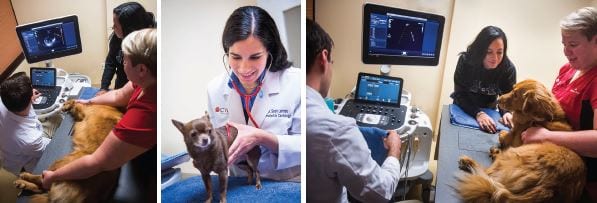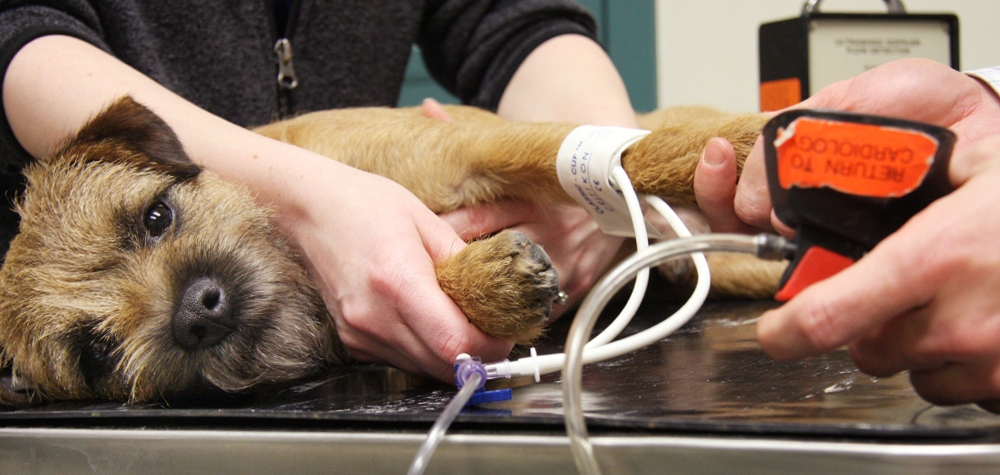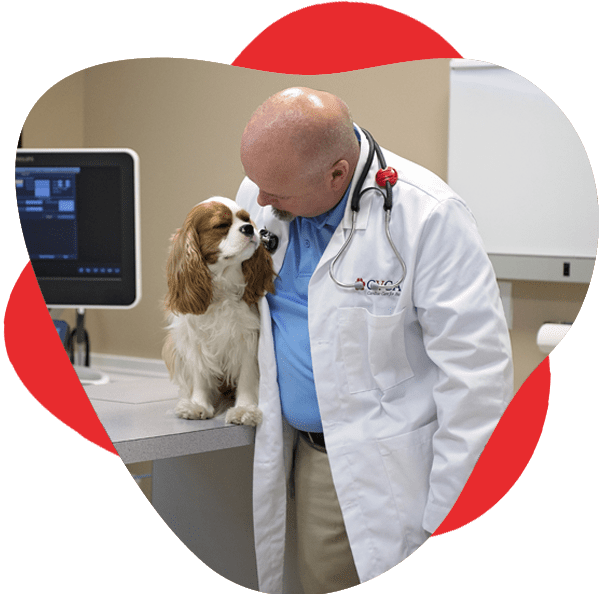How an Ultrasound For Dogs Can Reveal Hidden Health Concerns}
Wiki Article
What You Required to Know Regarding Veterinary Providers: An Overview of Diagnostic Equipments and Procedures
Veterinary services play a vital function in keeping the wellness of pets. Routine check-ups can disclose covert wellness worries at an early stage. Numerous analysis devices and treatments, such as blood tests and imaging strategies, supply essential understandings into an animal's wellness. Comprehending these methods is key for pet dog proprietors. What details diagnostic treatments are most typically utilized, and exactly how can they impact a pet's therapy plan?Importance of Normal Veterinary Examinations
While numerous pet proprietors might underestimate the value of regular vet check-ups, these consultations are crucial for maintaining a pet's overall wellness. Routine sees to the veterinarian permit very early discovery of prospective wellness concerns before they intensify right into major troubles. Normal exams usually include vaccinations, which are essential for preventing infectious conditions that could significantly affect a pet's health. In addition, these visits offer a chance for veterinarians to assess the animal's weight, dental health, and general problem, making sure that the pet is growing. During these sees, pet owners can also obtain valuable suggestions on diet, exercise, and preventive care customized to their certain animal's requirements.Typical Analysis Procedures in Veterinary Medicine
In veterinary medicine, precise medical diagnosis is vital for reliable therapy. Common analysis treatments consist of blood testing strategies, advanced imaging innovations, and urinalysis, each playing a substantial role in identifying health issues. Recognizing these techniques enhances the capability to give ideal treatment for pet patients.Blood Evaluating Strategies
Blood testing methods function as vital analysis devices in veterinary medicine, making it possible for vets to analyze the health of pets properly. These strategies entail accumulating blood samples to examine different parts, such as white and red blood cells, platelets, and biochemical pens. Usual examinations consist of complete blood matters (CBC), which examine general health and wellness and find infections, and biochemical panels, which examine body organ feature and metabolic status. In addition, serological tests can recognize certain diseases via antibody discovery. Blood testing is minimally intrusive and provides critical details that aids in detecting problems, checking health and wellness condition, and examining responses to therapies. Overall, these strategies play an important function in making sure ideal take care of family pets and livestock alike.Imaging Technologies Utilized
Analysis imaging technologies are important devices in veterinary medication, matching blood testing techniques by offering visual understandings right into an animal's interior frameworks. Typical imaging techniques include X-rays, which serve for examining bone cracks and discovering foreign objects, and ultrasound, which enables for real-time visualization of soft tissues and organs. Magnetic vibration imaging (MRI) uses thorough pictures of intricate physiological areas, especially in neurological evaluations. Computed tomography (CT) supplies cross-sectional photos, improving diagnostic accuracy for different problems. Each of these technologies aids vets in diagnosing ailments, preparing therapies, and monitoring recovery. By incorporating imaging modern technologies, veterinary experts can better evaluate a pet's wellness and make notified choices concerning their treatment.
Urinalysis and Diagnostics
Urinalysis acts as a vital analysis tool in veterinary medicine, giving valuable insights right into an animal's general health and aiding in the detection of numerous problems. This non-invasive treatment assesses urine samples to examine kidney feature, hydration status, and metabolic problems. Common parts checked out consist of details gravity, pH levels, glucose, proteins, and the visibility of blood or bacteria. Uncommon findings can show problems such as urinary tract infections, diabetes mellitus, or kidney illness. To boost analysis accuracy, urinalysis is usually done along with other tests, such as blood job and imaging research studies. Early detection via urinalysis can bring about timely treatments, boosting the prognosis for lots of veterinary clients. It is a necessary facet of extensive vet treatment.Recognizing Blood Tests and Laboratory Analysis
Comprehending blood examinations and research laboratory analysis is crucial in vet medicine as it assists in detecting different health problems in animals. Different kinds of blood examinations provide important info concerning a pet's inner state, while analyzing laboratory results calls for careful consideration of various aspects. This area will discover the types of blood tests offered and the value of their results.Kinds of Blood Examinations
Blood tests play an essential function in vet medication, offering essential understandings into a pet's health and wellness standing. Various kinds of blood examinations are utilized, each serving different functions. Total blood matters (CBC) analyze total wellness and identify conditions such as anemia or infection. Biochemical accounts evaluate body organ function by determining electrolytes and enzymes, using understandings into metabolic health and wellness. Serological examinations identify specific antibodies or pathogens, aiding in the medical diagnosis of infections or autoimmune diseases. Blood typing assurances risk-free transfusions, while coagulation examinations assess the blood's ability to clot, crucial for procedures. These tests collectively improve diagnosis, treatment planning, and monitoring of an animal's health, highlighting the relevance of complete research laboratory evaluation in vet treatment.
Interpreting Lab Results
An extensive evaluation of lab outcomes is essential for exact diagnosis and therapy in veterinary medication. Interpreting lab results calls for an understanding of regular recommendation varieties and the value of variances. Blood examinations can expose various health and wellness indications, such as body organ function, electrolyte balance, and the visibility of infections. Vets need to think about the entire scientific photo, consisting of the animal's history, physical exam searchings for, and any signs and symptoms provided. Variants in outcomes may develop from variables such as age, type, and underlying health and wellness conditions. Consequently, lab results ought to not be checked out in isolation however instead as part of an all-encompassing analysis technique. Exact analysis enables tailored treatment strategies and far better outcomes for veterinary clients.Imaging Techniques: X-rays, Ultrasounds, and Beyond
Imaging techniques are necessary tools in vet medication, supplying important insights right into the health and wellness and well-being of pets. Amongst one of the most commonly utilized techniques are X-rays and ultrasounds. X-rays are invaluable for envisioning bone frameworks, helping veterinarians identify cracks, growths, or foreign items. This method is non-invasive and quick, making it optimal for urgent situations.Ultrasounds, on the various other hand, utilize audio waves to produce pictures of soft tissues and organs. This technique is particularly valuable for taking a look at the heart, abdominal area, and reproductive body organs, permitting vets to assess problems like fluid buildup or body organ abnormalities.Beyond X-rays and ultrasounds, advanced imaging strategies such as computed tomography (CT) and magnetic vibration imaging (MRI) are significantly used in veterinary technique. These methods supply comprehensive cross-sectional images, boosting the precision of diagnoses and treatment plans. CT Scans For Dogs. Generally, imaging methods play a vital role in ensuring efficient veterinary careThe Duty of Biopsies in Diagnosing Pet Health Issues
Precision in detecting health issues in pet dogs frequently depends upon the use of biopsies, which provide conclusive info about cells irregularities. A biopsy entails the removal of a small example of tissue for examination under a microscope, permitting veterinarians to identify numerous problems, consisting of infections, tumors, and inflammatory conditions. This analysis device is essential for distinguishing in between deadly and benign growths, guiding treatment choices, and evaluating the seriousness of a condition.Biopsies can be performed using numerous strategies, such as needle aspiration, incisional biopsies, or excisional biopsies, relying on the place and kind of cells involved. The option of approach might influence healing time and the quantity of cells collected. Ultimately, the info gleaned from a biopsy can lead to targeted therapies, enhancing outcomes for animals facing severe health and wellness challenges. Vets highlight the relevance of this treatment in accomplishing precise diagnoses and effective therapy plans.Advanced Diagnostic Equipment: Endoscopy and CT Checks

Advanced diagnostic tools, such as endoscopy and CT scans, visit here play a necessary function in modern vet medicine, providing non-invasive methods to envision interior frameworks and identify numerous conditions in pets. Endoscopy entails making use of an adaptable article tube furnished with a camera, permitting vets to check out the stomach system and breathing system straight. This method can reveal abnormalities such as tumors, foreign bodies, or swelling, making it possible for targeted therapy plans.CT scans, on the various other hand, make use of advanced imaging innovation to create in-depth cross-sectional photos of the body (Board Certified Veterinary Cardiologist). This method is particularly beneficial for assessing complicated frameworks like the brain, spine, and joints. By offering high-resolution photos, CT scans help vets in recognizing problems that may not be apparent through conventional radiography. Together, these sophisticated devices boost diagnostic precision, improve therapy results, and ultimately add to better total pet dog health administration

Analyzing Examination Results: What Animal Owners Must Know
Comprehending examination results can be a challenging task for animal owners, especially after innovative procedures like endoscopy and CT scans have actually been performed. Interpreting these outcomes requires an understanding of medical terms and a clear understanding of what the searchings for show regarding the pet dog's wellness. Vets usually provide explanations, but the complexity of the results can still lead to confusion.Pet owners need to proactively participate in discussions with their vets, asking inquiries to clarify any type of unpredictabilities. It is necessary to understand irregular versus typical outcomes and the effects for the family pet's therapy plan. In addition, acknowledging that some outcomes may need further testing or surveillance can assist proprietors remain informed regarding their family pet's health and wellness trip. Ultimately, a collective strategy in between family pet proprietors and vet specialists promotes far better health and wellness end results and boosts the total care experience for pet dogs.Often Asked Questions
Exactly how Do I Pick the Right Vet Facility for My Pet dog?
Choosing the right vet clinic involves looking into neighborhood alternatives, assessing certifications, seeing facilities, and assessing team interactions (Cancer Veterinary Near Me). Focusing on referrals from relied on sources can aid ensure the very best treatment and setting for a pet's health needsWhat Should I Do if My Animal Declines to Go to the Veterinarian?
When an animal rejects to go to the veterinarian, it's a good idea to stay tranquil, use deals with or playthings to entice them, and consider scheduling a home see if anxiety persists. Persistence and positive reinforcement are essential.Exist Telehealth Options for Vet Providers?
Telehealth choices for veterinary services are increasingly readily available, permitting pet proprietors to seek advice from with veterinarians remotely. These services allow discussions concerning health and wellness worries, recommendations on minor disorders, and follow-ups without needing blog here to go to a clinic.
Just how Commonly Should My Animal Have Oral Exams?
The frequency of oral exams for animals typically depends upon their age and breed. Generally, vets advise yearly dental analyses, although some animals might need even more constant sees to keep excellent oral health.
What Are the Costs Connected With Vet Diagnostics?
The expenses related to veterinary diagnostics can vary commonly, typically varying from standard examinations like blood work to innovative imaging techniques. Elements influencing costs consist of the facility's location, equipment utilized, and certain examinations needed for each and every pet dog. Vet services play an important function in maintaining the health and wellness of pet dogs. While numerous family pet proprietors may underestimate the importance of normal vet exams, these visits are vital for maintaining a pet's overall health. Furthermore, these consultations give a chance for veterinarians to analyze the pet's weight, oral health and wellness, and general condition, making sure that the pet is flourishing. Precision in diagnosing health issues in pets often pivots on the usage of biopsies, which offer clear-cut info concerning tissue abnormalities. Furthermore, acknowledging that some outcomes might require further testing or surveillance can assist proprietors remain informed regarding their pet's wellness journey.Report this wiki page